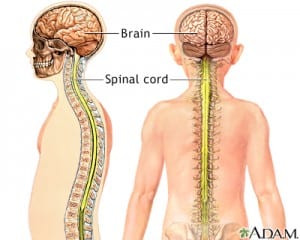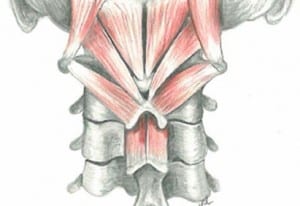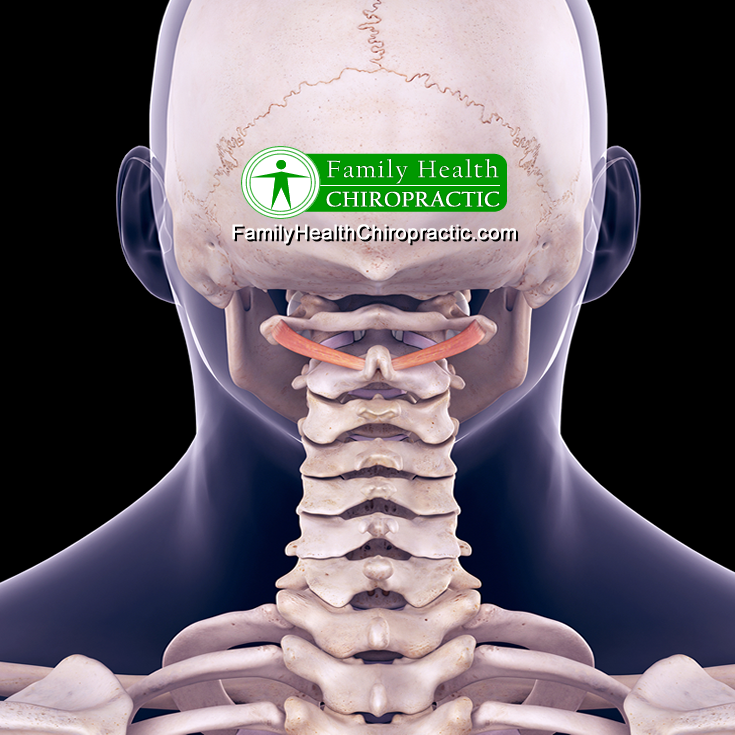We are fortunate enough to be living in a time where information is easily accesible – from ancient civilizations to modern life that spans the globe, you can access it immediately. Yet the volume of information is overwhelming. It's like we're drinking from a fire hose and often much gets lost or misinterpreted. For anyone hoping to understand more about how his or her body works, and an approach to putting that knowledge to work in a meaningful way for a happier, healthier life, I want to contribute.
Every week I meet people who come to my chiropractic office because they're in pain. If I ask, “Why now?”
The answer is almost always the same – “To get out of pain.”
Certainly, getting out of pain is a priority, but the lack of understanding of how our body works much less the chiropractic adjustment is literally killing you. Making matters worse, the research is complex and requires nothing short of a PhD in physiology or neurology to really get it. I’m going to gdo my best to help you out here.
NeuroPhysiology 101
To understand how the body and chiropractic works, we need to take a closer look at how the brain and nervous system work. If you take care of your brain, by default you are taking care of everything else.
Your central nervous system (CNS)
Your body is made of billions of nerve cells that make up billions of other combinations of connections with each other known as synapses. If a nerve cell is “spoken to” loudly enough, it gets excited and sends an electrical message to all the other nerve cells its connected to. This process goes on and on and it’s how they all talk to each other based on the information your brain receives from its 5 senses. This is how your brain adapts to an ever changing environment and it’s what physiologists call “neural plasticity”.
It is now well understood that the CNS (brain and spinal cord) can reorganize in response to altered external input. Examples of increased sensory input that can lead to positive neural plasticity is training your body for an event, learning the piano, reading braile, etc. On the other hand, a similar central nervous system change or reorganization may take place due to a decrease in behavior or activity such as not exercising, poor posture, stroke, etc.
Put simply, brain cells change their behavior based on how they’re talking to each other. These changes can be positive or negative and do not require pain to be detected.
Over the past 10 years, several research groups have demonstrated that chiropractic spinal adjustments can change various aspects of nervous system function, including muscle reflexes, reaction time, and the speed at which the brain processes information.
Chiropractic is about Prioritizing Brain Communication.
Along your spine are tiny muscles that enable you to perform “perfect” movements (i.e. without making mistakes). Every time your muscle is used or is “stretched” in any way, the muscle spindles tell your brain about it immediately. Basically, these muscles are your brain’s “eyes” within your muscles. Even if you close your actual eyes, you know where your body is because of the communication between these muscles and your brain.
When chiropractors apply an adjustive thrust (at the right speed and force) to the spine it “excites” the paraspinal muscles just enough to feed information to the brain, helping it to positively organize information. The opposite of this is also true – when the spine, including ligaments, tendons and paraspinal muscles do not move appropriately, the brain adapts and organizes in a negative way.

Image of the back of the skull and spine showing
the deep upper cervical paraspinal muscles that attach between the upper spinal vertebrae and the skull.
Put simply, if there is a stuck joint in the spine, the muscles around the joint don’t get excited, which means the brain will not receive information about what is going on at that particular segmental level. And what does the brain do if it doesn’t get this information? It will begin to fill the gaps with inaccurate information and results in less than ideal information sent to the muscles around that joint, resulting in ongoing problems (loss of flexibility, loss of balance and coordination, decreased force production or strength, loss of relaxation, increased sensitivity to pain, etc.)
What’s interesting is that scientists have shown that the number and density of muscle spindles are remarkably high in the deep small upper neck muscles. This suggests that these muscles are more for neurological processing than actual movement of the head and neck.
As stated earlier, decades of brain and spine research have demonstrated that chiropractic adjustments can trigger changes in the body that are as varied as:
- Improved or altered visual acuity and visual field size (1)
- Reduced joint position sense error (2, 3)
- Decreased reaction times (4)
- Altered Brain Processing (5, 6)
- Changes in the way our brain integrates sensory and motor information (7, 8, 9)
- Altered spinal cord reflex excitability (10, 11, 12, 13)
- Changes to specific messages that get sent to muscles from the central nervous system (14, 15, 16)
- Increased muscle strength in the legs (17)
- Reduced (or prevented) muscle fatigue (18)
The most interesting thing that came from all these experiments is that chiropractic care, adjusting the spine to restore spinal function, actually changes the way the brain functions.
So, regular chiropractic adjustments (yes… even when you are pain free) remain a steadfast asset when all the latest crazes come and go. People looking to increase muscle strength while losing excess body fat need to look no further than the scientific research that withstands the test of time. Increasing muscle strength and tone contributes to fat loss and tighter skin. Resistance training enhances workout results far more than simply walking or running. Resistance training strengthens muscles and increases body metabolism. Better metabolism ignites increased fat burning.
Chiropractic provides a key ingredient to improving the strength and energy found in muscles.
Research from 2015 showed that just one Chiropractic adjustment remarkably improved muscle strength and reduced muscle fatigue. The study specifically determined that the adjustment improved the electrical activity from the brain to the muscle while reducing fatigue within that same muscle. This combination of benefits certainly benefits the performance of anyone engaged in physical activity and exercise. Every athlete relies on the strength, energy, agility, and coordination of their muscle system for performance. The central nervous system directs each of these activities. A Chiropractic adjustment provides a unique and distinct advantage to everyone determined to improve performance and reshape their body. The greatest professional and Olympic athletes in the world utilize Chiropractic care on a regular basis to improve performance, strength, and recovery. The same science awaits the average person resolving to not only lose weight but also determining to change their lifestyle.
Implementing Chiropractic care brings countless benefits to the entire family and provides the same advantages sought by the greatest athletes in the world. Increased muscle electricity combined with decreased muscle fatigue enhances workouts for all ages and skill levels.
Trendy workouts and fad diets come and go with each new year but the proven science of Chiropractic never goes out of style.
Did this information help you in any way in your understanding a Chiropractic Adjustment?
Do you only get adjusted when you hurt?
Share your opinion in the comments or email me!




